New Wahoo Trackr Heart Rate monitor is more accurate and rechargeable
The Wahoo Trackr Heart Rate features enhanced HRV capabilities and favours USB recharging over coin batteries
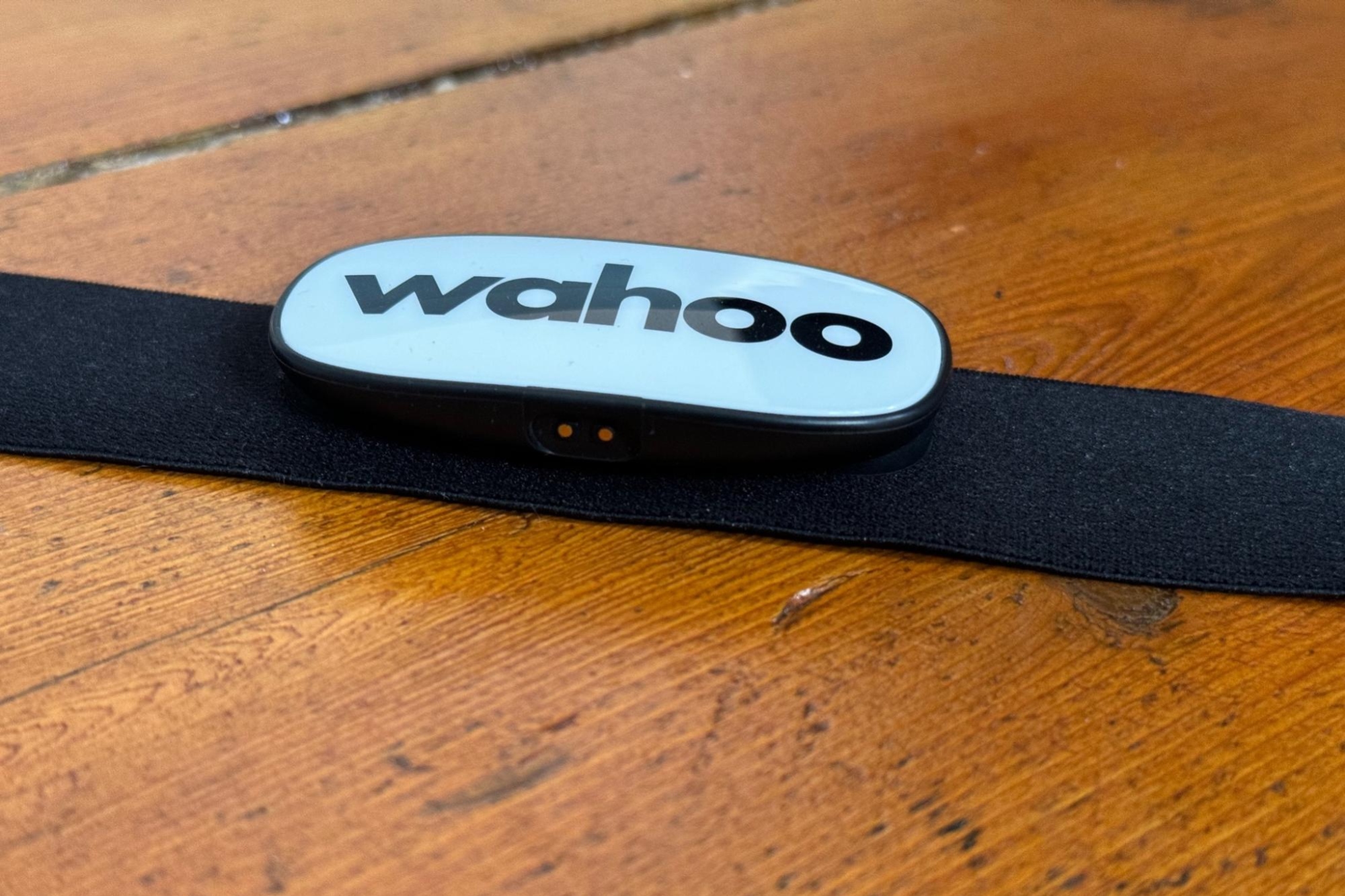
With improved accuracy, rechargeability, and HRV readings the Wahoo TRACKR is a solid improvement over the outgoing TICKR range. However, this comes at a price hike, while there were some erroneous readings on one ride and the strap is on the short side.
-
+
Rechargeable
-
+
Lightweight
-
+
High accuracy
-
+
Potentially better longevity
-
+
Can be used for HRV
- +
-
-
Strap a little small/short
-
-
Expensive
-
-
Some anomalous HR readings in testing
- -
You can trust Cycling Weekly.

The Wahoo Trackr Heart Rate is Wahoo’s latest heart rate monitor and replaces the outgoing Wahoo Tickr and Tickr X models. The biggest change is the switch from replaceable coin batteries to now being a rechargeable unit. This changes the battery life from around 500 hours to 100 on a single charge. The charging cable is a magnetic head which clips to the Tracr pod, with a USB C connector at the other end. Other changes include the unit being slightly smaller in its footprint but it sits slightly prouder from the chest. The strap also features a wider section to detect changes in heart rate and improved accuracy.
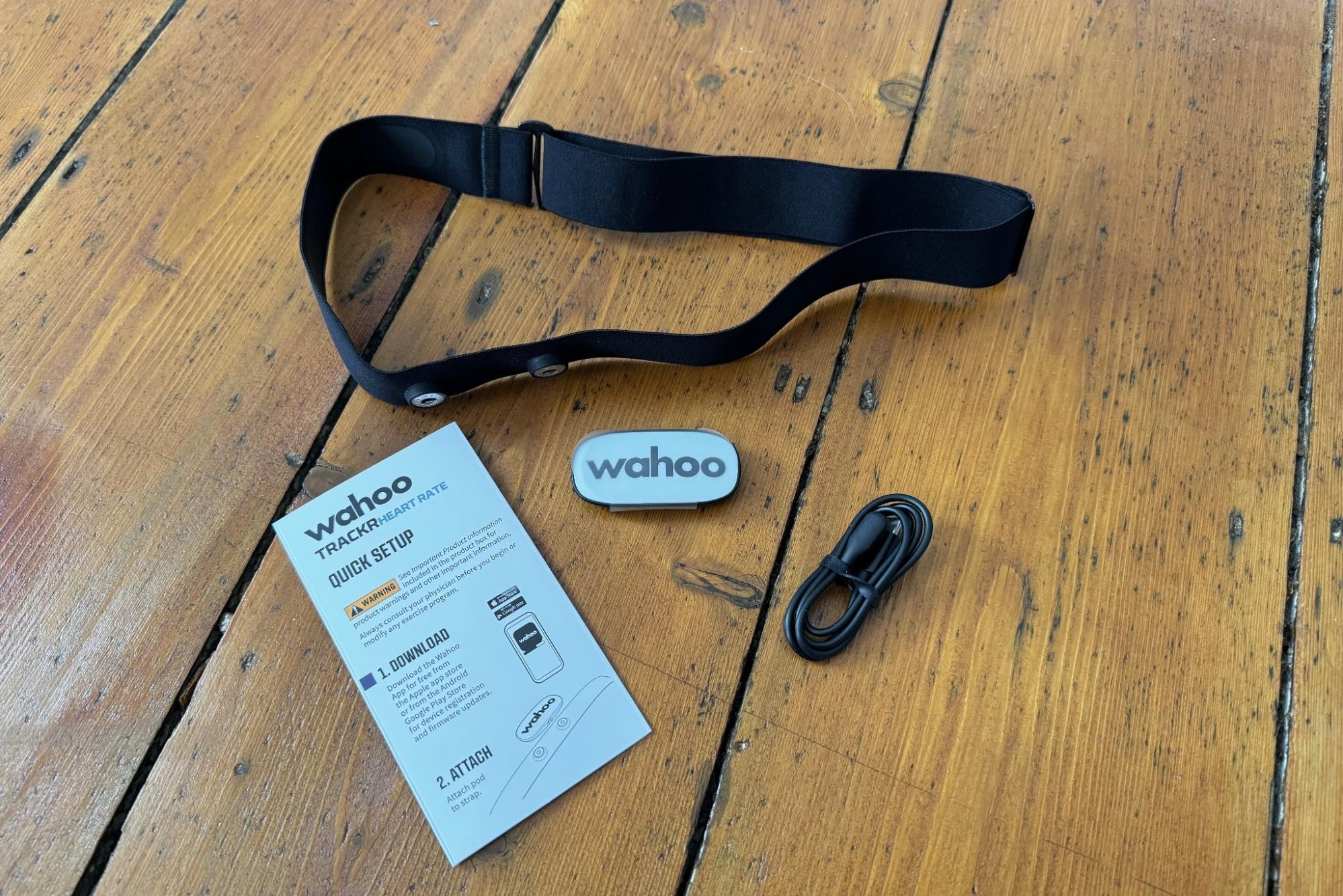
The strap is smaller than the previous generation, with a size of between 68.5cm to 87.6cm, but with the elasticity Wahoo claims it will fit chest sizes of up to 127cm. The strap also features a side closure now rather than the strap clipping into the heart rate pod. This is aimed at reducing the chance of damage to the connection points. Total weight for the pod is 11g while the strap is 40g, making this a particularly lightweight heart rate monitor.
In terms of connections, the Trackr Heart Rate can be connected up to three different Bluetooth connections simultaneously, while it can also connect via ANT+. Wahoo have updated their algorithms for detecting heart rate with a promise to improve accuracy. The Trackr Heart Rate is also IPX7 rated meaning it is not appropriate for swimming as it is only rated for 30 minutes being submerged in one metre of water, however this means it will work fine for cycling in rain or sweating.
The ride
To put the Trackr Heart Rate through its paces, I did a fairly intensive block of riding which included eRaces, longer rides in hotter weather, and also some rides where I got completely and utterly drenched. The eRaces were the perfect opportunity to see how quickly the Trackr Heart Rate responded to changes in heart rate as well as the more maximal levels. I simultaneously used a Wahoo Tickr at the same time to compare the heart rate data. Accuracy wise, they both gave pretty much exactly the same readings with the curves being as close as makes no difference. One thing that did occur during some rides was the odd spike in HR data, not in line with power or perceived effort/HR, but they were rare.
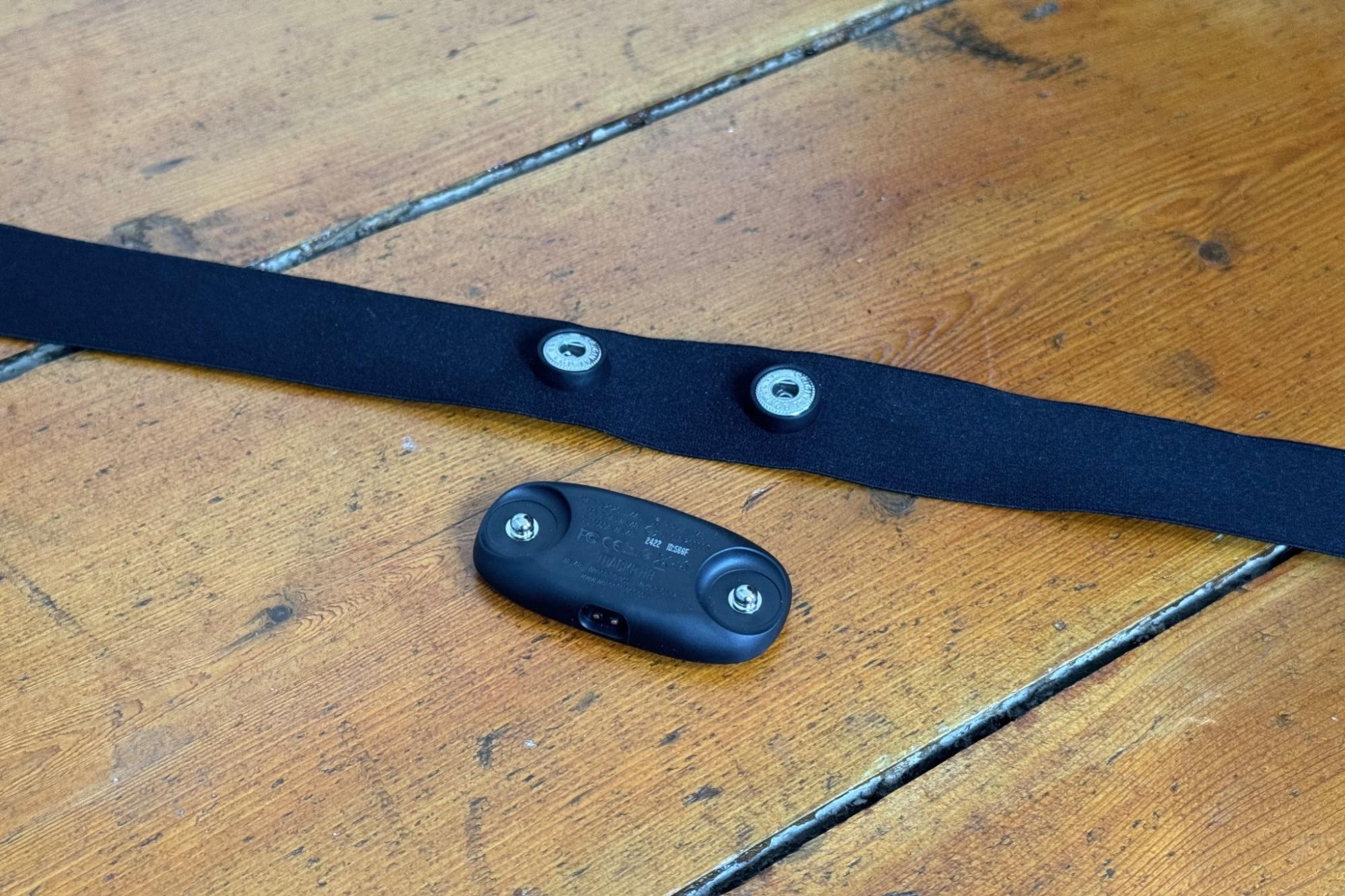
In the hotter rides, there were no issues with sweat affecting the battery life or leading to any sweat damage around the metal ports, same with the indoor rides as well. The design of the Trackr Heart Rate means that sweat is less likely to get to these metal components, very useful given that previously my Tickr heart rate monitors have generally stopped working because of damage from sweat over time. There were also no issues with performance during heavier rain. It is worth considering that temperatures were certainly not cold during these tests, and often rechargeable batteries have impaired performance in colder weather. Wahoo claims 100 hr battery life in ‘ideal’ conditions, and in warmer weather the Trackr Heart Rate appears to be on track to perform as claimed. But I would be interested to see how it performed in the winter months.
I also put the Trackr Heart Rate to the test when it came to heart rate variability (HRV) using the Elite HRV app. This was slightly tough to compare to other devices, as the only comparison was a wrist based HR measurement using an Apple Watch Ultra. However, using both simultaneously I got similar results. Over a period of 60 seconds both read an average HR of 70 bpm and HRV of 67 for the TRACKR and 65 for the Apple Watch Ultra. Testing in the morning as well the HR was 45 and 46 respectively with a HRV of 68 for both. The TRACKR does appear to take more readings per second than the TICKR, as heart rate varies more in readings in track with what my actual pulse was breath-by-breath.
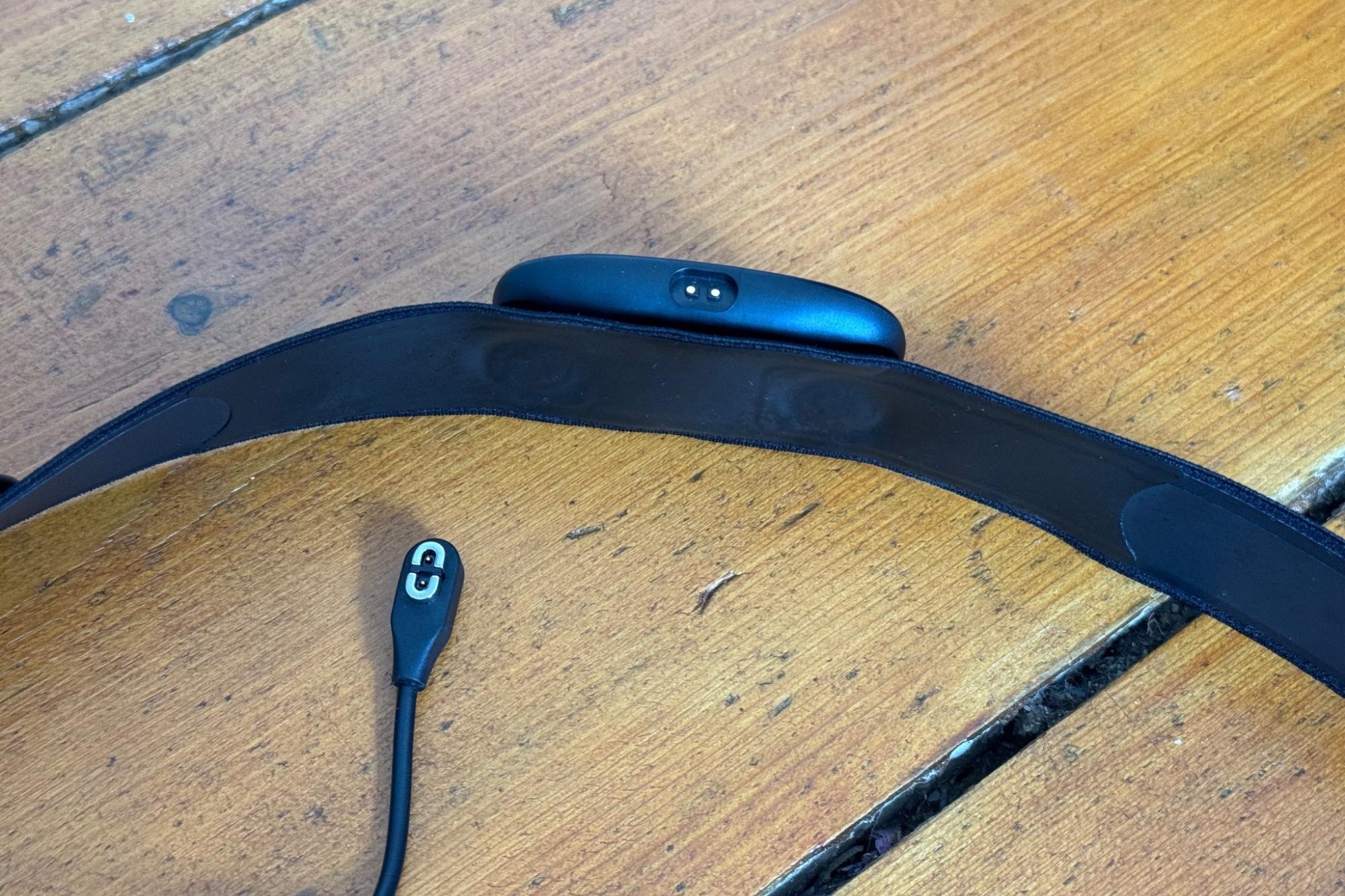
One thing that was a slight issue was the strap. It’s comfortable to wear, but the side closure is a bit more of a faff, but you can at least sort that while it’s on your front, and then twist the strap around to get the sensor in the right place. I also think that long term this will again help with longevity as the connector points were a weak point in an older generation Tickr I had.
The bigger issue is the length. I use a strap that is 87cm total length normally, so the 87.6cm max length of this is on the short side for me. Wahoo claims this fits up to 127 cm/50 inch chests thanks to the elasticity, but I think that would be quite tight on the chest of 127 cm! In terms of how it sits, it is a little prouder than the TICKR, but is also smaller in every dimensions but depth. Practicality wise I do prefer the rechargeable nature of it, although the magnetic port has a USB C at the other end, a connector standard that isn’t common on older hardware.
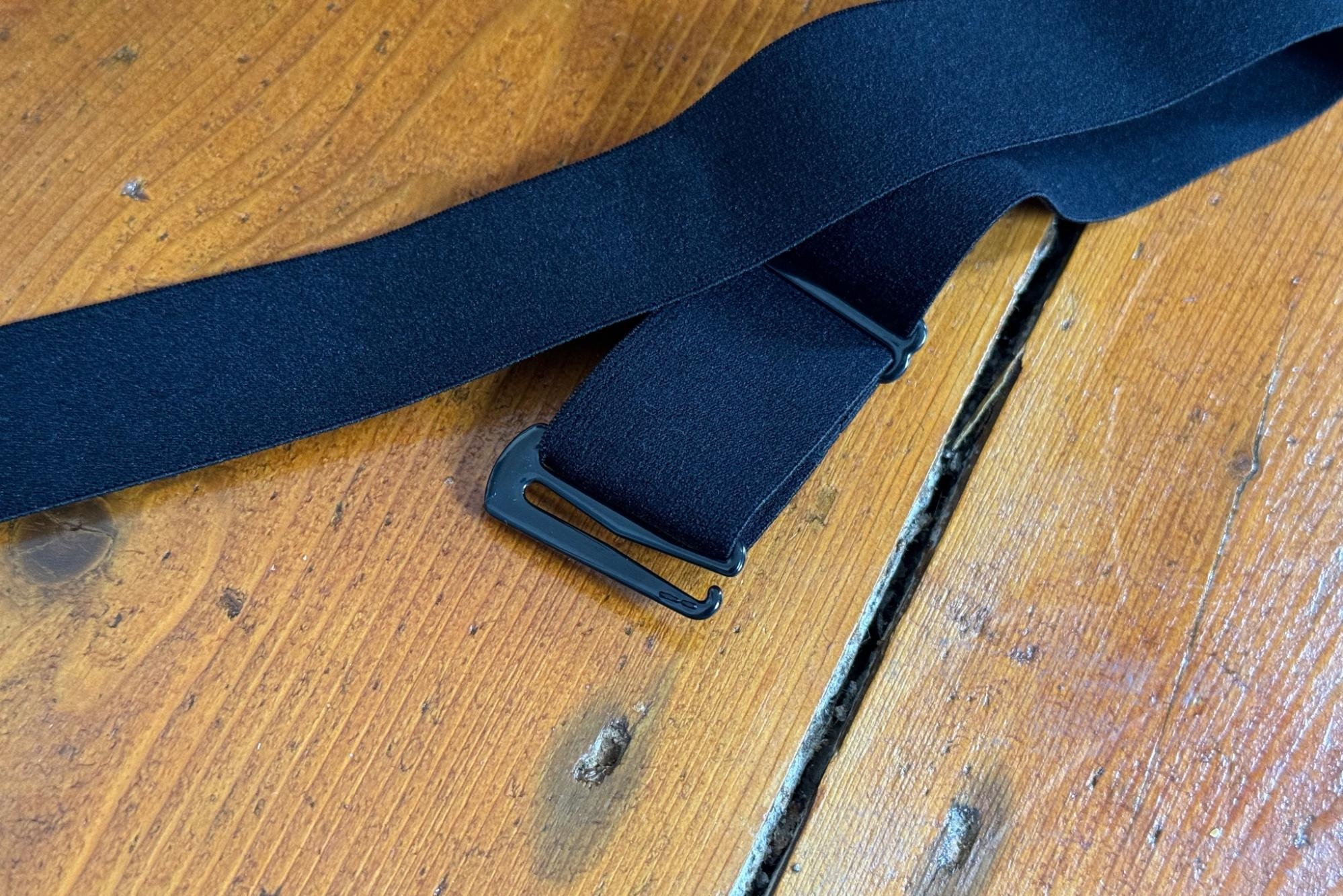
Value & conclusion
At £79.99, the Trackr Heart Rate is more expensive than the Tickr, which is £39.99 for the standard version and has a claimed 500 hour battery life on a coin cell battery. Garmin’s HRM-Dual for comparison is £59.99, this also provides HRV data but has a claimed 1277 hours battery life. The Garmin HRM-Pro is more expensive at £119.99 but that can store data and do more heart rate analytics, while the Polar H10 is £86.50 and is resistant to 30m of water.
In terms of accuracy and performance, I can only compare it to the TICKR, which the TRACKR performs well against. Is it worth double the price for the ability to not change batteries and be rechargeable? That will be a personal preference. I would imagine, with the design, that longevity will be improved with less chance of sweat damage, while 100 hours of battery life is ideal for most people between charges. For those wanting to reduce battery waste, the fact is that the Trackr Heart Rate is the only one of its kind as a rechargeable chest strap HR monitor.
The Wahoo Trackr Heart Rate is a solid performance upgrade to the Wahoo TICKR and can now be used for taking HRV readings as well as having, on paper and by Wahoo’s claims, better accuracy for general HR data. The rechargeable battery is an upgrade that means less battery waste while the new connection system should aid longevity. However, it is more expensive, and the strap is not the widest for broader chests.
Product info
- 100hr claimed battery life
- 320 day standby
- Magnetic charger with USB C at the other end
- No more disposable batteries
- New advanced detection algorithm for more accurate data
- Adjustable side closure
- ANT+ and Multi-BLE connectivity
- IPX7 rating (water resistant in 1m of water for 30 min)
- £79.99/$89.99/€89.99
- 11g pod weight
- 40g strap weight
- 27in to 34.5in//68.5cm to 87.6cm. Fits up to 50in//127cm chest with stretching according to Wahoo
- Hand wash only

Thank you for reading 20 articles this month* Join now for unlimited access
Enjoy your first month for just £1 / $1 / €1
*Read 5 free articles per month without a subscription

Join now for unlimited access
Try first month for just £1 / $1 / €1
Get The Leadout Newsletter
The latest race content, interviews, features, reviews and expert buying guides, direct to your inbox!
Andy is a Sport & Exercise Scientist, fully qualified and experienced Cycling Coach, Sports Director, Freelance Writer, and Performance Consultant. He spent 3 years riding for a UCI cycling team and 7 years as a BC Elite rider, competing in prestigious events such as the Tour of Britain and the Volta a Portugal.
Graduating with a first-class honours degree in Sport & Exercise Sciences, he continues to pursue his interest in research in the field of Sport Science alongside managing his coaching business, ATP Performance. He also works as a Wind Tunnel operator and Performance Consultant at the Silverstone Sports Engineering Hub, working with individuals, teams, and businesses to optimise performance and develop products.
-
 Man hands himself in to Belgian police after throwing full water bottle at Mathieu van der Poel during Paris-Roubaix
Man hands himself in to Belgian police after throwing full water bottle at Mathieu van der Poel during Paris-Roubaix30-year-old was on Templeuve-en-Pévèle cobbled sector when television pictures showed the bottle hitting him in the face
By Tom Thewlis Published
-
 'I'll take a top 10, that's alright in the end' - Fred Wright finishes best of British at Paris-Roubaix
'I'll take a top 10, that's alright in the end' - Fred Wright finishes best of British at Paris-RoubaixBahrain-Victorious rider came back from a mechanical on the Arenberg to place ninth
By Adam Becket Published
-
 'This is the furthest ride I've actually ever done' - Matthew Brennan lights up Paris-Roubaix at 19 years old
'This is the furthest ride I've actually ever done' - Matthew Brennan lights up Paris-Roubaix at 19 years oldThe day's youngest rider reflects on 'killer' Monument debut
By Tom Davidson Published